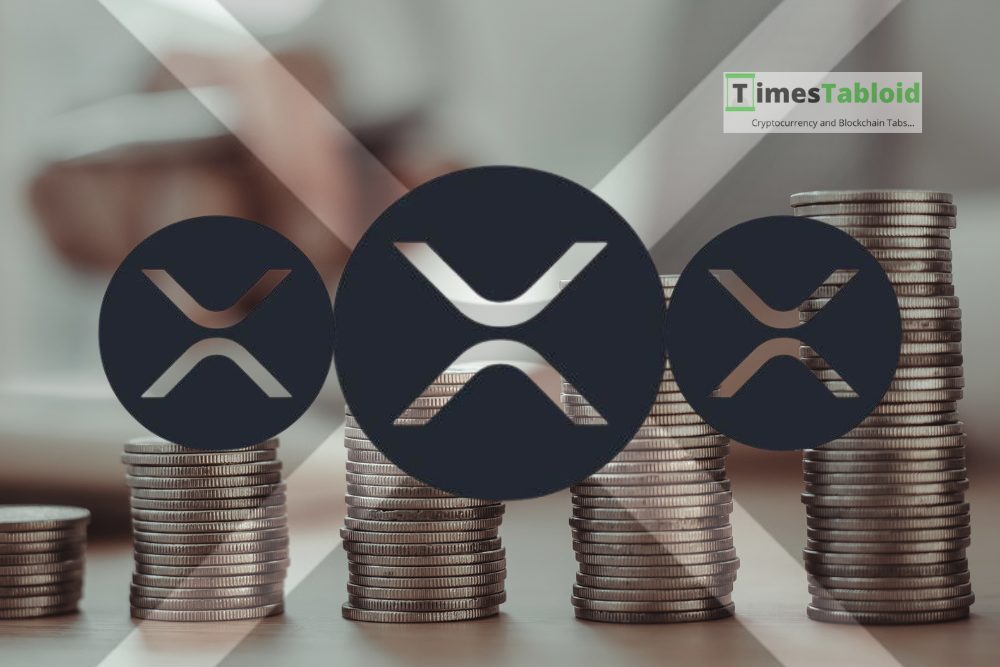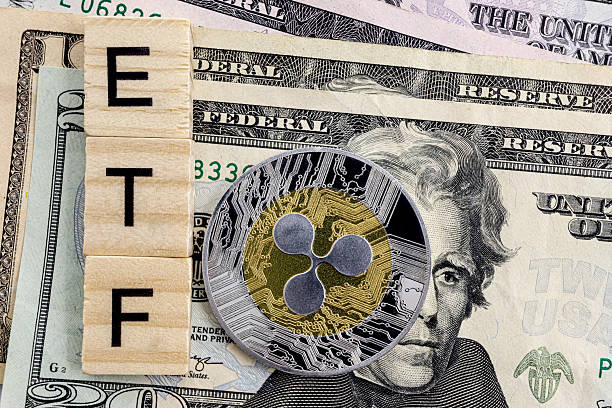
The Balancer V2 exploit involved a rounding error in the upscale function of Composable Stable Pools, allowing attackers to drain over $117 million via batch-swap manipulations across multiple blockchains. Balancer’s
CoinOtag
You can visit the page to read the article.
Source: CoinOtag
Disclaimer: The opinion expressed here is not investment advice – it is provided for informational purposes only. It does not necessarily reflect the opinion of BitMaden. Every investment and all trading involves risk, so you should always perform your own research prior to making decisions. We do not recommend investing money you cannot afford to lose.
Could XRP Revolutionize Corporate Treasury and FX Hedging? Analysts Weigh the Possibility

The possibility of corporate treasuries using XRP to manage foreign exchange (FX) exposure has become a growing topic of interest among financial analysts. As multinational corporations face increasing currency volatility, digital assets like XRP could eventually play a role in improving the speed and efficiency of FX transactions. However, such adoption remains theoretical at this stage. Global FX Hedging Practices FX hedging is a core function for companies that operate internationally, helping them protect earnings from currency fluctuations. Data from Milltech covering the 2024–2025 period shows that 86% of European corporations and 82% of North American firms currently hedge their currency exposure. On a global scale, the average hedge ratio stands at 48%, meaning roughly half of global FX risk is actively managed. Larger firms, particularly those listed in the FTSE 350 or major U.S. indices, typically operate comprehensive hedging programs. Conversely, companies that neglected FX protection experienced significant losses; around three-quarters of unhedged firms suffered financial setbacks in 2024. Traditional hedging instruments remain dominant in treasury operations. Forward contracts represent 60–70% of all hedging activity, while options and swaps account for 15–20% and 10–15%, respectively. A smaller share, typically 20–40%, comes from “natural” hedging, matching revenues and expenses in the same currency. Despite this, many organizations continue to face challenges such as high operational costs, complex reporting requirements, and increased risk when dealing with emerging market currencies. Exploring XRP for Corporate Treasury Use According to Reuters , global hedgeable assets tied to the U.S. dollar total roughly $33 trillion, but a large proportion remains unhedged. Treasury experts suggest that as global financial flows expand, companies will seek faster and cheaper alternatives to traditional methods. This has sparked early discussions about whether digital assets like XRP could be used to streamline cross-border FX management. In a hypothetical model, corporations could allocate 5–10% of their cash reserves to XRP and use the XRP Ledger (XRPL) or RippleNet for international payments. We are on X, follow us to connect with us :- @TimesTabloid1 — TimesTabloid (@TimesTabloid1) June 15, 2025 These transactions settle in three to five seconds, often at negligible fees, and could significantly reduce settlement delays and transaction costs. In practice, firms might convert receivables or payables into XRP, transfer the tokens across borders almost instantly, and then convert them back into their target currencies. This process would minimize the time funds remain exposed to exchange rate movements. However, analysts caution that XRP’s annualized volatility of 50–100% makes it considerably riskier than major fiat currencies, which typically fluctuate between 5–15%. For this reason, XRP is presently more suitable as a liquidity and payment medium than as a direct hedging tool. Potential Market Impact on XRP To estimate what such adoption could mean for XRP’s price, Google’s Gemini AI simulated a scenario in which corporate treasuries adopted XRP for part of the $200 billion annual global FX hedging activity. Based on its current market capitalization of around $136.31 billion and a circulating supply of 60.1 billion tokens, Gemini projected that XRP’s value could rise to approximately $25 per token, corresponding to a $1.5 trillion market capitalization. The model further indicated that if institutional use expanded in parallel with retail demand, and if liquidity constraints or spot ETF approvals amplified buying pressure, XRP’s market value could surge even higher. In such a case, Gemini estimated a potential price range between $90 and $120, implying a total market cap of $5.4 to $7.2 trillion. While the idea of corporate treasuries adopting XRP for FX hedging remains speculative, the concept reflects growing interest in integrating blockchain solutions into traditional finance. Disclaimer: This content is meant to inform and should not be considered financial advice. The views expressed in this article may include the author’s personal opinions and do not represent Times Tabloid’s opinion. Readers are urged to do in-depth research before making any investment decisions. Any action taken by the reader is strictly at their own risk. Times Tabloid is not responsible for any financial losses. Follow us on Twitter , Facebook , Telegram , and Google News The post Could XRP Revolutionize Corporate Treasury and FX Hedging? Analysts Weigh the Possibility appeared first on Times Tabloid . CoinOtag

Metaplanet Bitcoin Loan: Unlocking $100M for Strategic Growth
BitcoinWorld Metaplanet Bitcoin Loan: Unlocking $100M for Strategic Growth In a groundbreaking move that highlights the growing confidence in digital assets, Metaplanet, a publicly traded Japanese company, has successfully secured a significant financial injection. This strategic Metaplanet Bitcoin loan , valued at an impressive $100 million, leverages the company’s substantial Bitcoin holdings as collateral. It’s a bold step that not only solidifies Metaplanet’s commitment to Bitcoin but also opens new avenues for corporate financing in the crypto era. What is the Metaplanet Bitcoin Loan and How Does it Work? The core of this financial maneuver is a Bitcoin-backed loan. Essentially, Metaplanet used its existing Bitcoin treasury as collateral to obtain a fiat currency loan. This mechanism allows companies to access capital without having to sell their valuable Bitcoin assets, thus retaining potential upside while still funding operational needs. Collateralized Lending: Metaplanet’s 38,230 BTC holdings, as reported on October 31, served as the foundation for this $100 million loan. Strategic Capital Access: This approach provides liquidity without divesting from their primary treasury asset. Trust in Bitcoin: The ability to secure such a large loan demonstrates increasing institutional trust in Bitcoin’s value and stability as a collateral asset. The decision to secure this Metaplanet Bitcoin loan reflects a forward-thinking financial strategy, positioning the company at the forefront of digital asset integration in corporate finance. Why This Strategic Move Matters for Metaplanet Metaplanet isn’t just securing a loan; it’s executing a multi-faceted strategy designed to enhance its market position and expand its influence. The $100 million in funds will be allocated across several key areas: Purchasing Additional BTC: A significant portion of the loan will be reinvested directly into buying more Bitcoin, further increasing Metaplanet’s treasury holdings. This shows conviction in Bitcoin’s long-term value. Company Share Buybacks: By buying back its own shares, Metaplanet aims to increase shareholder value and consolidate ownership. This can signal confidence to investors and potentially boost stock prices. Expanding Business Operations: The remaining funds will fuel broader business expansion, enabling Metaplanet to pursue new ventures and grow its market footprint. This approach highlights Metaplanet’s unique position as a Japanese publicly traded company that has wholeheartedly embraced Bitcoin as a primary treasury asset. Their strategy goes beyond simply holding Bitcoin; it involves actively leveraging it for corporate growth. The Broader Implications of Bitcoin-Backed Financing Metaplanet’s move is not an isolated incident; it’s part of a growing trend where companies are exploring innovative ways to utilize their digital asset holdings. The success of the Metaplanet Bitcoin loan could inspire other corporations to consider similar strategies, especially those with substantial crypto treasuries. For the wider crypto market, this institutional adoption of Bitcoin as collateral adds another layer of legitimacy and utility. It demonstrates that Bitcoin is evolving beyond a speculative asset to a foundational element in corporate financial planning. However, it’s important to acknowledge the inherent volatility of Bitcoin, which presents both opportunities and risks for such financing models. Metaplanet’s Vision: A Future Built on Bitcoin Metaplanet’s commitment to a Bitcoin-centric strategy, highlighted by this Metaplanet Bitcoin loan , is clear. They view Bitcoin not just as an investment, but as a core component of their financial infrastructure and future growth. This vision positions them as a pioneer in integrating digital assets into traditional corporate finance, potentially setting a precedent for others. Their actions reflect a belief in Bitcoin’s long-term potential as a hedge against inflation and a store of value. By continuously increasing their Bitcoin holdings and using them strategically, Metaplanet is building a robust, future-proof treasury that aligns with the evolving global financial landscape. The Metaplanet Bitcoin loan represents a bold step towards a future where digital assets play an even more integral role in corporate strategy. It underscores the innovative potential of Bitcoin, not just as a currency or an investment, but as a powerful tool for strategic financing and business expansion. As Metaplanet continues its journey, its pioneering approach will undoubtedly be watched closely by both traditional finance and the cryptocurrency world. Frequently Asked Questions (FAQs) Q1: What is a Bitcoin-backed loan? A Bitcoin-backed loan is a type of loan where a borrower uses their Bitcoin holdings as collateral to secure a loan, typically in fiat currency. This allows them to access liquidity without selling their Bitcoin. Q2: How much did Metaplanet secure in this loan? Metaplanet secured a $100 million loan using its Bitcoin holdings as collateral. Q3: What will Metaplanet use the loan funds for? Metaplanet plans to use the funds to purchase additional Bitcoin, buy back company shares, and expand its business operations. Q4: What makes Metaplanet unique in its approach to Bitcoin? Metaplanet is a Japanese publicly traded company that has incorporated Bitcoin as a primary treasury asset, actively leveraging it for strategic financial maneuvers like this loan. Q5: What are the benefits of a Metaplanet Bitcoin loan for the company? The benefits include accessing capital without selling BTC, retaining potential upside from Bitcoin appreciation, increasing shareholder value through buybacks, and funding business expansion. Q6: Does this loan indicate a broader trend in corporate finance? Yes, Metaplanet’s move highlights a growing trend of companies exploring Bitcoin-backed financing, indicating increasing institutional adoption and utility of digital assets in corporate treasury management. If you found this article insightful, consider sharing it with your network! Help us spread the word about the innovative ways companies like Metaplanet are integrating digital assets into their financial strategies. Your shares help foster a deeper understanding of the evolving crypto landscape. To learn more about the latest corporate crypto strategy trends, explore our article on key developments shaping Bitcoin institutional adoption. This post Metaplanet Bitcoin Loan: Unlocking $100M for Strategic Growth first appeared on BitcoinWorld . CoinOtag











